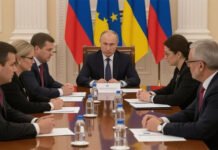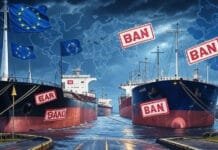The European Union (EU) is exploring the possibility of using frozen Russian assets to provide financial support to Ukraine, a move that underscores both the political and strategic dimensions of the ongoing conflict in Eastern Europe. While EU leaders agree on the principle of supporting Ukraine, significant challenges remain regarding coordination, legal frameworks, and equitable risk-sharing among member states.
Background
Since Russia’s invasion of Ukraine, the EU and its allies have frozen billions of dollars in Russian assets, including financial accounts, property, and state-owned assets within member countries. Discussions are now underway about leveraging a portion of these assets to fund humanitarian aid, military support, and post-war reconstruction efforts in Ukraine.
“The idea is to transform frozen assets into a mechanism that can help Ukraine rebuild while ensuring transparency and legality,” said a senior EU official familiar with the deliberations.
Coordination Challenges
Despite broad consensus on assisting Ukraine, EU leaders face logistical and legal hurdles. Each member state holds varying amounts of frozen assets, and national laws differ regarding seizure, use, and distribution of such assets. Coordinating risk-sharing and legal compliance is critical to ensure that no country bears disproportionate responsibility or legal exposure.
“We are navigating uncharted territory,” said Dr. Maria Schneider, an EU policy analyst. “The challenge is to balance urgency with legal integrity and equitable participation among member states.”
Potential Mechanism for Asset Utilization
Preliminary proposals include establishing an EU-wide special fund, where member states contribute a portion of frozen Russian assets proportionate to their holdings. The fund would then allocate resources to Ukraine through transparent, audited channels, potentially involving EU institutions and partner organizations.
“This could be a model for collective action in crisis situations,” noted Schneider. “But it requires careful design to avoid legal challenges and political backlash.”
Political Implications
The proposal also carries political weight. Supporting Ukraine through frozen assets sends a strong signal to Moscow that Europe is unified in its sanctions and willing to enforce consequences for aggressive behavior. At the same time, balancing national interests within the EU is essential to maintain cohesion and prevent disputes among member states.
“Member states must see this as a fair and transparent approach,” said French diplomat Pierre Leclerc. “Otherwise, it risks undermining the EU’s credibility and solidarity.”
International and Financial Impact
Using frozen Russian assets to support Ukraine could have global financial and diplomatic repercussions. Markets may react to the precedent of repurposing frozen state assets, and Russia is likely to respond diplomatically or through countermeasures. Analysts are also watching how non-EU countries, particularly the U.S., coordinate their own frozen assets with EU initiatives.
What to Watch Next
EU Fund Proposal: Monitor announcements regarding the creation and governance of the special fund for Ukraine.
Member State Reactions: Key countries like Germany, France, and Italy will play pivotal roles in shaping risk-sharing agreements.
Ukraine Allocation: The timeline and mechanisms for disbursing funds to Ukraine will be critical to the success of the initiative.
Conclusion
The European Union’s consideration of using frozen Russian assets to support Ukraine represents a historic and complex policy initiative. By balancing legal compliance, member-state coordination, and urgent financial support, the EU aims to bolster Ukraine’s resilience while maintaining unity within the bloc. As deliberations continue, global observers will be closely watching the EU’s approach to ensure transparency, fairness, and effectiveness in this high-stakes geopolitical maneuver.















